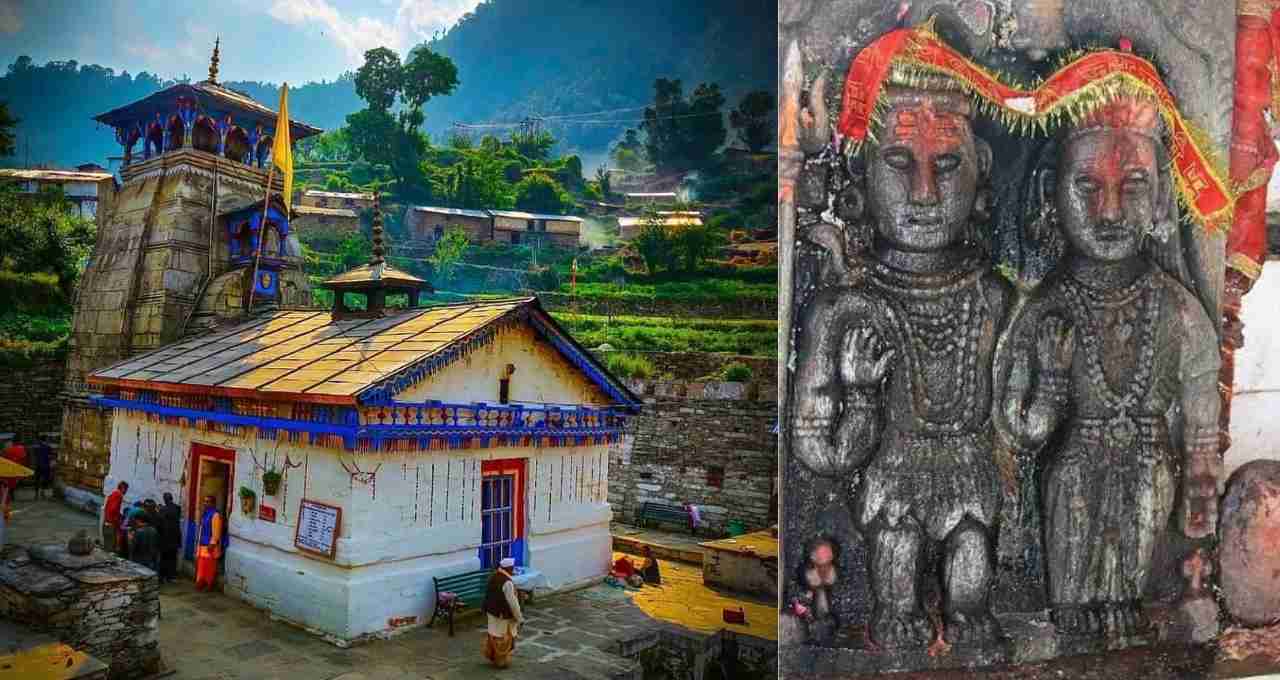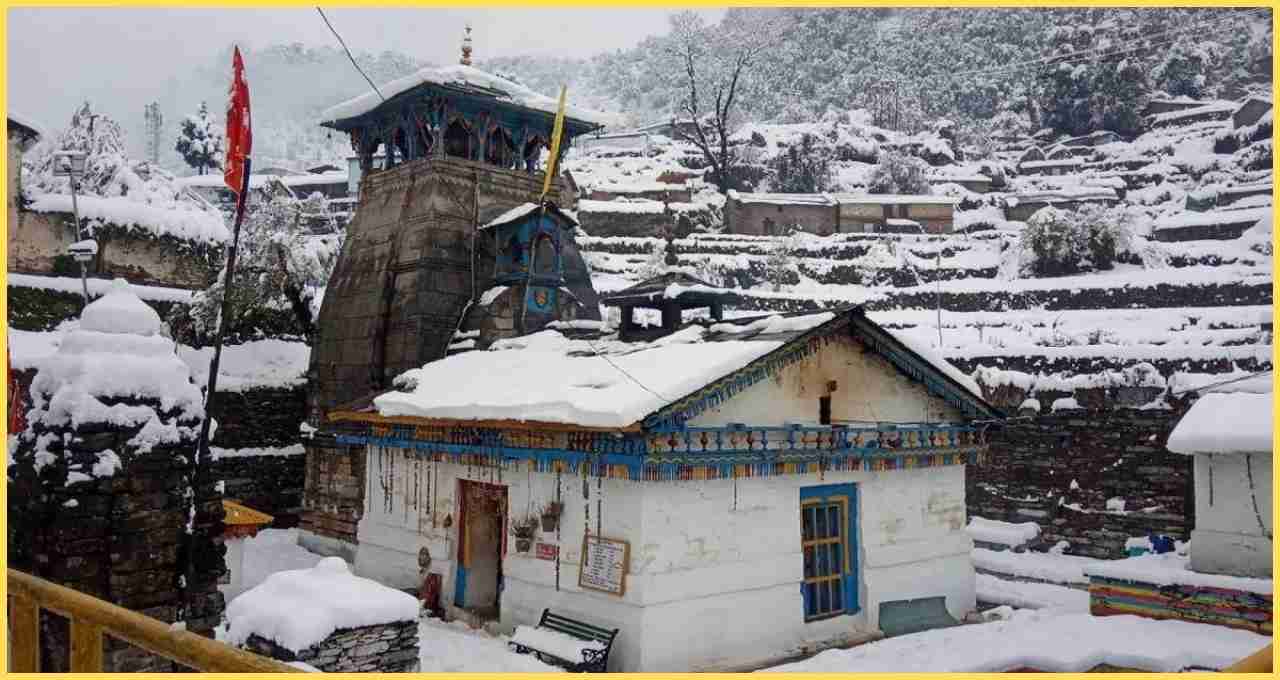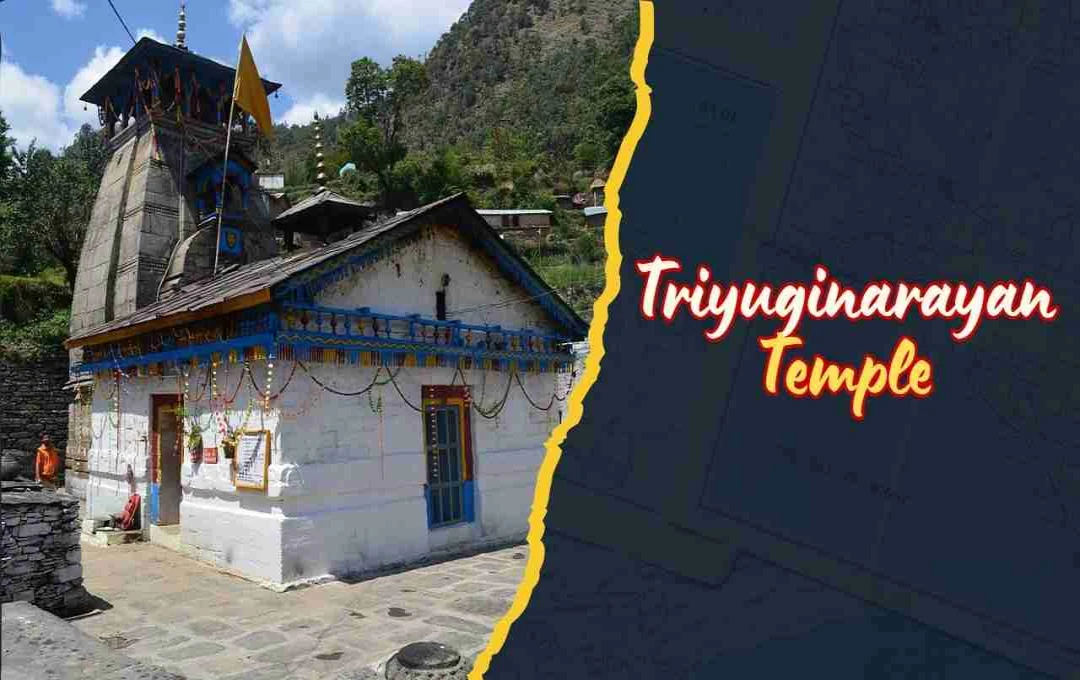In the series of religious and mythological sites of India, the Triyuginarayan Temple in Uttarakhand is a place known not only for its spiritual significance but also for its unique legend, architectural art, and natural beauty. This temple is dedicated to Lord Vishnu, but its fame is further enhanced by the legend associated with the divine marriage of Shiva and Parvati. Located in the village of Triyuginarayan in the Rudraprayag district, this temple is considered a sacred pilgrimage site, where the continuously burning fire 'Akhand Dhuni' still retains its flame.
The Name of Triyuginarayan and its Mythological Significance
The spirituality of this place is hidden in the name 'Triyuginarayan' itself. This name is composed of three words—'Tri' meaning three, 'Yugi' denoting the eras, and 'Narayan' which is a name of Lord Vishnu. It is said that the fire here has been burning since three eras—Satya Yuga, Treta Yuga, and Dwapara Yuga. For this reason, it is called 'Triyuginarayan'. According to Hindu Dharma, there are four eras: Satya Yuga, Treta Yuga, Dwapara Yuga, and Kali Yuga. The length of each era is measured in millions of years. This temple is also important from this perspective because the fire here bears witness to every era. The ashes of this fire are also considered extremely sacred by devotees, especially for marital happiness.
The Divine Marriage of Shiva and Parvati: The Legend of Triyuginarayan

The most famous legend of the Triyuginarayan Temple is related to the marriage of Shiva and Parvati. Parvati, who was the daughter of Himavat, the king of the Himalayas, was the reincarnation of Sati, Shiva's first wife. When Sati committed suicide due to the insult of her father, Shiva was saddened. Parvati tried to win Shiva's heart through her beauty and penance. Eventually, she performed rigorous penance at Gauri Kund, which is still located just five kilometers from Triyuginarayan. Shiva proposed marriage to Parvati in Guptkashi. Later, their marriage took place in Triyuginarayan. In this marriage, Lord Vishnu performed the Kanyadaan (giving away the bride), and Brahma played the role of the priest. All the sages of that time were witnesses to this marriage. The stone called 'Brahma Shila' located in front of the temple marks this wedding site.
Akhand Dhuni: A Flame Burning for Centuries
The most distinctive feature of the Triyuginarayan Temple is the 'Akhand Dhuni' here. This fire, which is believed to have been burning since the time of Shiva-Parvati's marriage, still burns in the Havan Kund (sacrificial fire pit) of the temple. It is said that in ancient times this fire used to ignite itself, but in the Kali Yuga, the Jamloki Brahmins of the Kedar Valley keep it continuously burning. The Jamloki Brahmins are the main priests and worshippers of this temple. This fire is not only a religious symbol but also a center of miraculous faith for the devotees. Devotees offer Samidha (sacrificial wood) into this flame and take the ashes with them, considering them sacred. According to religious beliefs, marital happiness, progeny happiness, and prosperity are attained from these ashes.
Four Holy Kunds and Water Stream: Divinity of Nature
A stream of water flows from the temple premises, which is called Saraswati Ganga. This stream provides water to four holy Kunds—Rudra Kund, Vishnu Kund, Brahma Kund, and Saraswati Kund.
It is essential to understand the religious significance of these Kunds:
- Rudra Kund: Bathing site associated with Shiva
- Vishnu Kund: For purification with holy water
- Brahma Kund: For drinking water
- Saraswati Kund: For worship
It is believed that the deities bathed in these Kunds before the marriage. The water emanating from Saraswati Kund is believed to have originated from the navel of Vishnu. Bathing in the water of these Kunds purifies both the body and the mind.
Architecture and Sculpture: The Uniqueness of the Temple
The architecture of the Triyuginarayan Temple is largely similar to the style of the Kedarnath Temple. It was built by Adi Shankaracharya, who is credited with the construction of many temples in Uttarakhand. In the sanctum of the temple, a silver idol of Lord Vishnu, about two feet tall, is installed, along with the idols of Lakshmi, the goddess of wealth, and Saraswati, the goddess of music and knowledge. This overall combination makes this temple an extremely religious and artistic center. The Brahma Shila stone in the temple complex is marked as the wedding site. Here, devotees continuously offer Samidha around the 'Akhand Jyoti' (eternal flame). The faith associated with this fire has spread throughout the region.
Geography and Natural Beauty
The geographical location of the Triyuginarayan Temple also enhances its importance. This temple is situated at an altitude of 1980 meters (approximately 6500 feet), about five kilometers from the confluence of the Mandakini and Songanga rivers. This area is extremely pleasant, with a cool climate, snow-capped mountains, and horticulture of apple and other fruit-bearing trees. During the three months of winter, a thick sheet of snow covers the area. This natural beauty captivates travelers and devotees.
Access and Travel Route

The access to Triyuginarayan village is about 12 kilometers by motorable road from Sonprayag. In addition, there are several trekking routes, one of the popular routes being a short trek of 5 kilometers from Sonprayag, which passes through dense forests. From Kedarnath, this temple is about 25 kilometers of trekking distance, which is a challenging and scenic experience for mountain trekking enthusiasts. The 17-day trekking route starting from Mussoorie is also famous, which includes Tehri, Belak, Budakedar, Ghuttu, Panwali Kanta, Triyuginarayan, and finally Kedarnath. The Uttarakhand government has developed several circuits to make this area attractive for tourists and pilgrims, with the Rudraprayag-Kedarnath circuit being prominent. The nearest airport is Dehradun, which is approximately 244 kilometers away.
Religious and Social Significance
The Triyuginarayan Temple is not only religiously significant but also an integral part of local culture, traditions, and public life. Every year, many pilgrims come here, especially to worship for marital happiness, progeny happiness, and family good fortune. The water of the four Kunds located near the temple is considered sacred and is also said to cure infertility. This place is not only a center of faith but also a symbol of social harmony. The culture of the Jamloki Brahmins, who have been serving this temple for centuries, is also associated with this temple.
Spiritual Experience in Triyuginarayan
Devotees who come to this temple not only engage in religious activities but also experience a profound spiritual feeling in the serene atmosphere and natural beauty here. The holy fire of the temple, the greenery all around, the melodious sound of the river flowing, and the cool breeze fill the mind with peace and joy. The journey here is not just a temple visit but a spiritual journey that connects the devotee to looking within and experiencing deep spirituality.
The Triyuginarayan Temple is a wonderful pilgrimage site due to its unique fire, the divine Shiva-Parvati marriage legend, and the holy Kunds. This temple is not only a center of faith but also presents a unique confluence of spiritual peace and natural beauty. A visit here infuses new energy and reverence into life.















